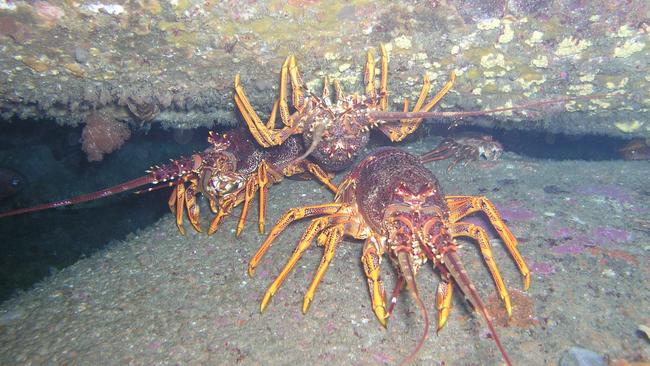Seismic testing harms rock lobsters, new study finds
A new study, which involved field tests in Tasmania’s Storm Bay, has found seismic airguns used to conduct geological surveys of the sea floor inflict permanent harm on rock lobsters.
Tasmania
Don't miss out on the headlines from Tasmania. Followed categories will be added to My News.
Seismic airguns used to conduct geological surveys of the sea floor inflict permanent harm on rock lobsters, new research has found.
Scientists from Tasmania’s Institute for Marine and Antarctic Studies and the Centre for Marine Science and Technology at Curtin University have found that the sensory organs and righting reflexes of rock lobster can be damaged by exposure to air gun signals.

The study, published in the journal Proceedings of the Royal Society B, is the latest in a series of studies they have conducted into how seismic surveys affect marine animals.
Seismic testing is commonly used by the oil and gas industry to look for undersea deposits. It involves the repeated blasting of the sea floor with soundwaves from high powered airguns.
Lead author Dr Ryan Day said researchers exposed rock lobster to seismic airgun noise during field tests in Tasmania’s Storm Bay and examined the effects on a key sensory organ, the statocyst, and the lobsters’ reflexes.
“While the impact of air guns on whales and fishes has been relatively well-studied, the effects on marine invertebrates such as lobsters, crabs and squid remain poorly understood,” Dr Day said.
“We chose to study the impact on rock lobster because they are a high value fishery and an important part of global marine ecosystems.”
MORE NEWS:
TASSIE PUBLIC SECTOR WAGE DEAL BREAKTHROUGH ... FOR NOW
FULL DRAW: HURRICANES’ FIRST ‘HOME’ GAME TO BE AWAY
PREMIER SAYS TASMANIAN SALMON IS SAFE TO EAT
The testing showed that the statocyst, a sensory organ on a lobster’s head which is critical in controlling their righting reflex, was affected by exposure to seismic airguns.
“After exposing lobsters to the equivalent of a commercial air gun signal at a range of 100-150 metres, our study found that the animals suffered significant and lasting damage to their statocyst and righting reflexes.
“The damage was incurred at the time of exposure and persisted for at least one year — surprisingly, even after the exposed lobsters moulted,” Dr Day said.
The study is the latest in a series which has shown marine animals — including scallops and zooplankton — suffer physiological damage from noise such as seismic surveys


